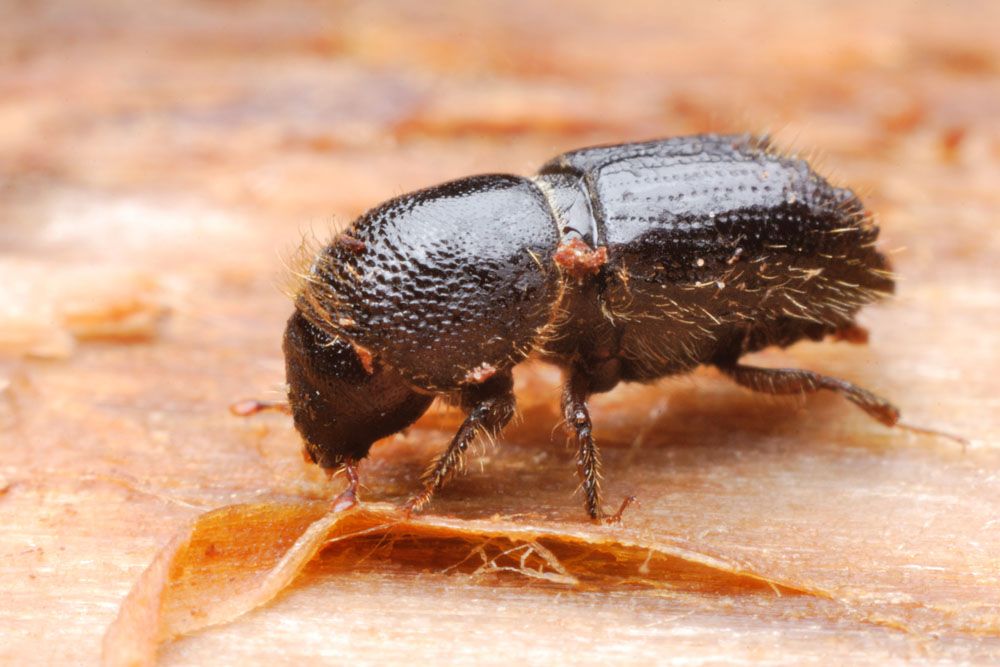
Ips Beetles – Engraver Beetles – Pine Engravers – Ips spp.
Ips (Engraver) Beetles/Pine Engravers (Ips spp.)
Latin Name: (Ips, Engraver spp.)
Common Name: Ips (Engraver) Beetles/Pine Engravers
Appearance:
- Adults are tiny (about 2 to 6 mm in length), cylindrical, reddish-brown to black, with the pronotum concealing the head when viewed from above. The posterior part of the elytra (wing coverings) is hollowed down, coarsely pierced, and surrounded by numerous spines.
- Adult beetles are cylindrical, dark red-brown to black, and 1/8-3/16 inch (3-5 mm) long. Some species can grow to be as long as 1/4 inch 6 mm.
- Larvae are typical C-shaped and are indistinguishable from the larvae of other bark beetle species. Ips calligraphus, six-spined ips, 3.5 to 6.5 mm long, with six spines on each
